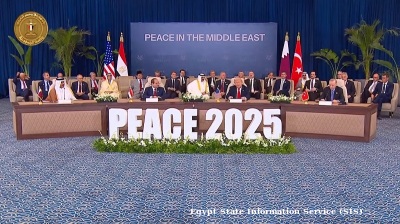The second and heavier phase of US sanctions aimed at Tehran will tip the Iranian economy back into recession with its GDP set to contract by 3.7% in 2019, global forecasting and quantitative analysis consultancy Oxford Economics said on August 28.
The sanctions, due to take effect from November 5, target “Iran’s oil industry and crude exports which form the backbone of the economy and the primary source of revenue and foreign currency for the government [and they] will cripple the economy”, Mohamed Bardastani at Oxford Economics said in a note.
A GDP contraction of 3.7% in 2019 would be the worst economic performance by Iran in six years, he said, adding: “For 2020, we see growth of 0.5%, driven by a modest recovery in private consumption and net exports.”
Oxford Economics has previously argued that the sanctions introduced against Iran by the US this year would prove less severe than the sanctions of 2011. “However,” said Bardastani, “it now looks like the impact will be worse than we initially thought as the other signatories to the original [Iran nuclear] deal have yet to spell out a clear strategy that would allow them to circumvent US sanctions and continue importing Iranian oil.”
China, the number one importer of Iranian crude, in early August rebuffed a request from the US that it stop purchasing oil consignments from Iran although the details of its commitment remain scarce. Europe, meanwhile, this week came under pressure from Tehran to accelerate efforts towards the provision of guarantees on accepting Iranian oil and preserving banking relations. India, the second largest purchaser of Iranian oil, is according to various reports pressing Washington to give it a waiver that will allow it to keep importing around half the volume of Iranian oil that it usually accepts. South Korea, another significant importer of Iranian oil but also much dependent on the US where security issues in regard to North Korea are concerned, looks to be bowing to the Trump administration in a move that may reduce its purchases of crude from Iran to nil.
Threatened blockade
Iran, meanwhile, has threatened to blockade the Strait of Hormuz that connects the Persian Gulf to the open ocean should US sanctions impact its crucial oil revenues. Blocking the waterway would prevent energy exports from other countries in the region reaching global markets, thereby greatly pushing up oil prices.
By pulling out of the nuclear deal and taking an aggressive, unilateral approach to Iran hinging on sanctions, the US is aiming to throttle the Iranian economy to the point that Tehran comes to the table to renegotiate its role in the Middle East. But Iran hopes a multilateral effort by the other nuclear deal signatories—the UK, France, Germany, Russia and China—will help it survive the economic attack.
In early August, Iranian Foreign Minister Mohammad Javad Zarif attacked the US, saying its oil embargo was doomed to fail and that “the world is sick & tired of US unilateralism.”
In May, Oxford Economics lowered its 2018 Iran growth estimate to 2.3% from 4.1%.
The first phase of US sanctions imposed on Iran kicked in on August 7. They target the Islamic Republic’s transactions in US dollars, trade in gold and other precious metals, auto industry and issuance of sovereign debt, among other areas.
News

Japan to recycle soiled adult diapers
Traditionally, the soiled products are burned with general waste, but their high moisture content hampers combustion and reduces energy efficiency.

US, Egypt, Qatar, and Turkey sign agreement to end Gaza war at Sharm El-Sheikh Summit
The US, Egypt, Qatar and Turkey signed a binding peace document on October 13, guaranteeing a ceasefire in the Gaza Strip, marking what President Trump called “perhaps the greatest achievement” of his presidency.

770,000 migrants told to leave Russia
Deportation regime activated for largely Central Asian nationals amid crackdown critics describe as xenophobic.

Pakistan, Afghanistan exchange fire along contested Durand Line
Pakistan has claimed responsibility for killing over 200 Taliban fighters in a series of precision strikes along the contested Durand Line.




